According to the Diabetes Research Clinical Practice, the Global Prevalence of Diabetes in the year 2019 was estimated to be 9.3% of the global population that is approximately 463 million people and is predicted to be rising to 10.9% that is almost 578 million people by 2030.
It’s said that 1 in 2 people are undiagnosed. More than 1.1 million children and adolescents are living with type-1 diabetes. Facts are unnerving but what actually is diabetes. The term “ Diabetes” has now become a layman term that almost everyone either uses or hears in our day-to-day routine.
Diabetes is a chronic lifestyle condition that occurs due to the inability of the pancreas to produce enough insulin to process or pass the Glucose in our food through the blood which leads to the accumulation of glucose in the blood which in turn shoots up our Blood Sugar Levels.
Diabetes is often called a Metabolic Disease or is also said to be a chronic lifestyle condition. Modern-day lifestyle changes are said to be the main reason for the increase in the percentage of individuals suffering from diabetes.
It is said that Diabetes may not be cured completely; however, devising an appropriate meal plan and engaging in physical activity is important to manage diabetes better.
However, there are many food choices available when it comes to managing blood sugar levels. Ghee is considered healthy amongst the many cooking oils available, but the amount of fat it has a concern.
Is ghee really bad for diabetics?
Ghee has for some time been utilized as a therapeutic fixing that has fundamental supplements that may help keep diabetics solid. What makes ghee a great element for diabetics? We should discover out.
**According to Macrobiotic Nutritionist and Health Coach Shilpa Arora, “Ghee is prescription for diabetics. The unsaturated fats in ghee help in using and adjusting high glucose. In addition, if ghee is added to rice, it ends up less demanding for the diabetics to process the sugar from rice viably.

Buy cow Ghee Online: Order Now. Free Shipping
Ghee is known to manage the smooth working of stomach related problems. Desi Ghee is a solid fat, which helps in retaining the supplements form the nourishment that you are eating. This procedure helps in directing glucose levels.
The utilization of ghee has been known to enhance the working of the gut hormone. This capacity empowers better discharge of the hormone insulin, which thusly helps in overseeing diabetes.
Adding ghee to high sugar sustenances with a high glycaemic file like rice, white bread, parathas, et al may really help bring down their GI and advantage diabetics. While ghee is an awesome fixing, one ought to recollect that balance is critical. Try not to overdose on ghee and make it a vital component to eating everything undesirable.
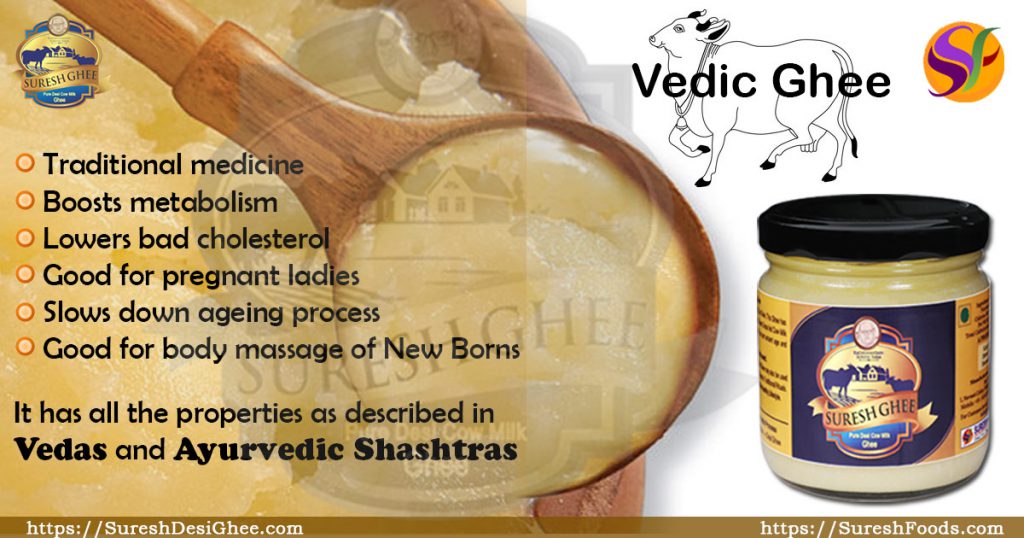
The fatty acids in traditional ghee ( ghee prepared from grass-fed cows and made by using billona churn method) helps in metabolizing and balancing high blood sugar. Adding a teaspoonful of ghee wouldn’t harm anyone. Prepare Vedic ghee from cow’s milk.” Here’s why ghee may be a good option for diabetics:

- The linolenic acid in ghee may help reduce the risk of cardiovascular diseases that are said to be some of the complications in diabetics.
- Ghee has a high amount of good fat, which is considered healthy. It is known to help absorb nutrients from the food you consume. As per Nutritionist Shilpa Arora, “Adding ghee to the rice may help the diabetics to digest the sugar from rice effectively.”
- Adding ghee to high glycaemic foods may help reduce the impact of carbohydrates on your blood sugar levels.
- Ghee helps smoothen the digestive tract and ensures a healthy gut. It helps relieve constipation and keep your body healthy.
- The presence of vitamins A, B and K along with other compounds in ghee help boost immunity, which is generally weakened in diabetics.
** Refer
When ghee is added to food, the otherwise carbohydrate high food with a high glycemic index such as parathas, rice, dosa, idly, etc. becomes low in the glycemic index and offers natural diabetic control.
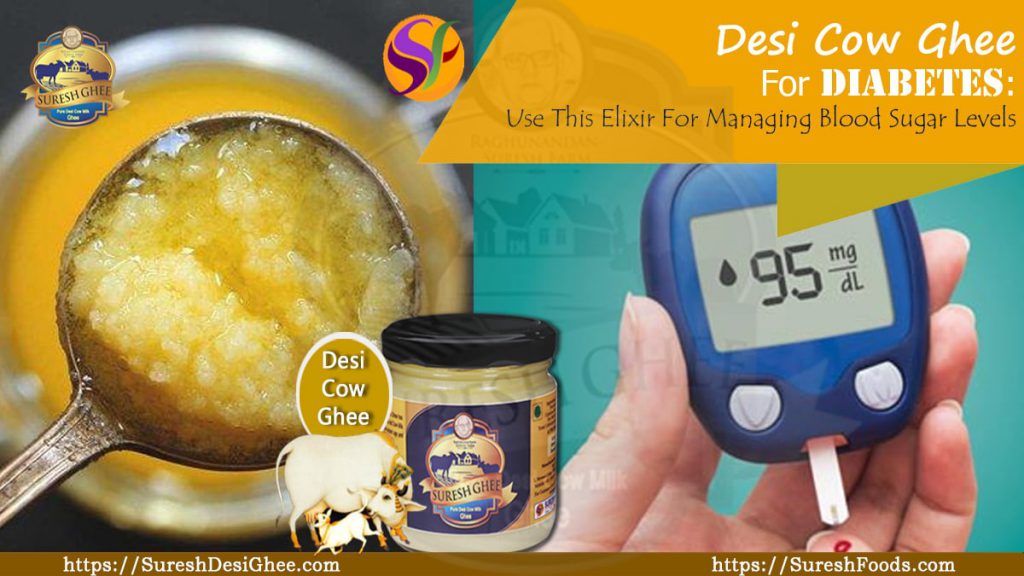
Desi Cow Ghee For Diabetes: Use This Elixir For Managing Blood Sugar Level
How to use ghee for diabetics?
Always ensure adding not more than a teaspoon of ghee to dal and rice or any other high carbohydrate food to ensure easy digestion of the same. Bring ghee into use instead of other cooking oils so as to reap maximum benefits. Make sure you do not consume ghee more than 2 spoons a day, it may only reverse the benefits. Also, do consult a doctor before including it in your diet.
Ways to Use Ghee for Diabetes
Stir Some into steaming hot rice
Rice always tastes delicious if you add some warm ghee to it. You can roast some jeera in desi ghee and add it into rice to make a quick jeera rice.
Use desi ghee for roasting pavs instead of butter
Replace butter with desi ghee while making pav bhaji, use desi ghee to roast the pavs. They might actually taste better and you can add ghee in the bhaji also. In case you didn’t know, many people prefer using desi cow ghee instead of butter.
Make flavourful soups with ghee
Stir in ghee into soups to make it creamier and let them brim with flavour and aroma. Be it any kind of soup; tomato, cream of onion or mushroom soup, ghee will never disappoint you.
Use ghee in place of butter while baking
Any time a baking recipe calls for butter, you make use of desi ghee instead. You will soon be churning out wonderfully moist cakes, pancakes, and muffins with the splendor of ghee.
Desi cow ghee is a great ingredient, one should remember that moderation is key. Do not overdose on ghee & make it a key to eating everything unhealthy. Consult your diabetes specialist before even consuming a spoonful of the wondrous ghee in order to reap its maximum benefits.
FAQ
Both cow ghee and buffalo ghee are considered to be suitable for individuals with diabetes. However, cow ghee is mostly preferred due to its effortless digestibility and having comparatively richer nutritional content.
Ghee consists of a low level of glycemic index, which signifies it has a proportionally minor impact on insulin levels when compared to high glycemic index foods such as white bread and white rice. Studies have suggested for those people having diabetes to include a medium quantity of ghee in their meal, as it aids in slowing down the release of glucose into the bloodstream.
Both ghee and butter can be eaten in moderation by people having diabetes. Although, it’s necessary for individuals having diabetes to become cautious while consuming such saturated fats.
One should ensure that moderate intake of ghee along with meals is suggested for individuals with diabetes.
Both ghee and butter are good sources of nutritional fats with a low glycemic index. Hence, they are appropriate for individuals having diabetes, involving both Type 1 and Type 2 diabetes, when eaten in moderation.
Pure Desi Ghee Price Online: 1 kg Ghee Price is Rs 2390/-When and how to give ghee to your baby, infant and its health benefits?10 Things most people don’t know about Indian desi cow gheeAyurvedic Eye Treatment: Netra Tarpana (Ghee Eye Bath)Desi Ghee for Sinus Problem| Ayurvedic Remedy |Benefits of Desi Ghee

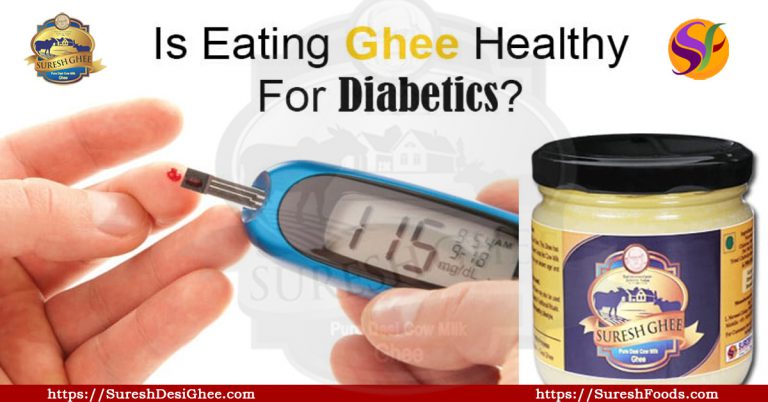


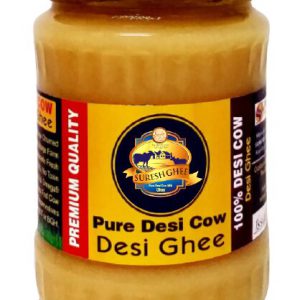
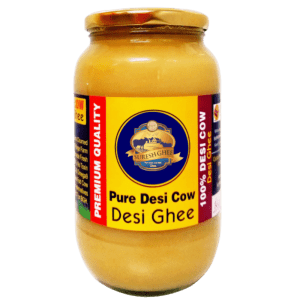

 WhatsApp us
WhatsApp us
Naveen m...